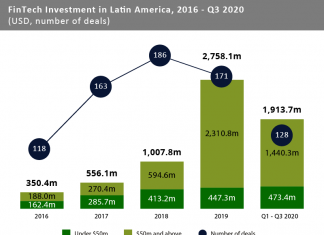It has been a few years since the digital asset hype took the world by storm and has since fallen to the background. Despite this, the asset type is still popular, and could see more market adoption in 2024.
The digital asset space has gone through a number of turbulent times. From heights where the value of various tokens reached record heights, down to the lows, dubbed crypto winters, where people were claiming the end of the asset type. However, it has endured, and digital assets continue to be a popular sector. For example, three of the biggest FinTech deals in the UK during 2023 were into companies operating in the digital asset space. Similarly, four of the biggest FinTech deals in Switzerland in 2023 were also into companies involved with digital assets.
While the hype around the technology is no longer as high as it once was, there is still clearly a big market for digital assets. Radomir Mastalerz, the co-founder and CEO of easy-to-use and affordable wealth management platform WealthArc, said, “The digital assets will definitely grow. Nevertheless, there are still obstacles that need to be removed before popularity of digital assets explode. Especially in the area of the ownership laws.”
Stephany Zoo, head of ecosystem at Caladan, expects 2024 to be a significant time for digital assets, spurred on by the SEC’s approval of 11 Bitcoin exchange-traded funds, which will open up the assets to more investors. Zoo said, “Given the approval of the Bitcoin ETF, there will be a great influx of institutional capital, which will change the dynamics of the market in general. In the realm of tokenizing of real world assets, DePIN, or decentralized physical infrastructure, will become more popular, helping onboard machines onto Web3, such as fleets of cars. Increased tokenisation is useful in creating not only more liquid markets, but better price discovery and efficiency across the board.”
Peter Wood, Chief Technical Officer at Spectrum Search is also optimistic for digital assets growth during 2024. However, the key to all of this is a wider understanding and trust in these types of assets. He also noted that while digital assets are no longer featuring at the top of the news, they are still developing and evolving, albeit as a rather niche sector.
He added, “As mainstream financial entities increasingly explore and integrate blockchain and crypto-based offerings, we’re likely to witness a more mature, regulated, and accessible landscape. This evolution will play a crucial role in maintaining and possibly amplifying interest in digital assets, especially among investors seeking diversification and innovation in their portfolios.”
Stablecoins
One area of the digital asset landscape that got a recent boost was the world of stablecoins. These are a type of digital asset that has its value tied to a currency, commodity or financial instrument, and aim to make digital tokens less volatile to other types of digital assets. The UK’s Financial Conduct Authority (FCA) recently launched a discussion paper that is seeking feedback to help guide its approach to regulating stablecoins.
Chor Teh, director of financial crime compliance at Moody’s Analytics, said, “In line with crypto’s increasing adoption, regulators are examining the best way to de-risk a historically volatile space. The FCA’s consultation looks like one of the first steps for doing so, with the regulator seeking to draft legislation for stablecoins before moving on to a wider range of crypto assets. What’s interesting about the consultation is the number of participants the FCA has suggested it’s suitable for. Outside of crypto firms, the FCA wants insights from consumer groups and retailers who may consider using stablecoins as an alternative form of payment.”
Its consultation is aimed at helping develop the country’s regulation around stablecoins, with the HM Treasury having previously outlined its intention to define fiat-backed stablecoins within legislation as well as making changes to the payments legislation to enable payment for goods and services to be made through fiat-backed stablecoins. Other regulatory moves around stablecoins are happening around the world. Earlier this week, the Federal Reserve Chair Jerome Powell reportedly told House Democrats that the US needs a legislative framework for stablecoins. However, Reserve Bank of New Zealand Governor Adrian Orr recently voiced concerns that stablecoins are not stable.
“2024 will be a year when crypto becomes increasingly professionalised and used more frequently in everyday financial transactions,” Teh added. “Whatever the outcome of the consultation, those within organisations responsible for due diligence and de-risking will need to automate real-time and comprehensive data checks into their KYC workflows, to best prepare for adherence to any new regulation and meet the growing demands to assess crypto risks.”
Tokenisation
Another area of the digital asset landscape that could be set for increased interest is tokenisation. This is a method of issuing a digital representation of an asset, helping to improve the distribution of illiquid assets. For example, a building could be divided into various tokens, which could then be bought and traded on a secondary market.
Michael Walsh, CEO of Ireland and Head of Distribution at Zodia Markets believes tokenisation is a way to provide retail investors with access to opportunities that are typically locked off to those with large pools of money. He added, “The same could be said of other private assets such as litigation finance pools and private equity funds that are normally funded by very large investors or liability partners. In addition to advantages for small investors it is likely to lead to an upward repricing of assets for the original owners as there is a greater weight of money available.”
Mastalerz was also optimistic in the ability of tokenisation to improve the liquidity of investment types. He said, “Tokenisation will increase accessibility of various types of investments to retail investors. You could invest in property without the need of buying the property itself. As a result, tokens of traditionally illiquid assets will become more liquid.” However, while he believes tokenisation within wealth management will continue to evolve this year, it won’t significantly take off as an asset class for a few more years. As to whether wealth managers are keeping their finger to the pulse of tokenisation, he said, “Traditional wealth managers prefer less volatile assets, but I can assure you, all of them are observing the growing space of alternative assets.”
However, not everyone is as optimistic for the future of tokenisation within wealth management. Fredrik Davéus, the CEO and co-founder of financial analytics API developer Kidbrooke, said, “There is more efficient tech to keep track of real-world assets, and in the real world. It is actually useful and common to be able to reverse transactions which is the whole point of DLTs to not do.”
NFTs
The most notorious form of tokenisation is non-fungible tokens (NFTs). Common examples of these were digital works of art that people traded the ownership for. Prices for these soared, with the highest value transaction believed to be for one title The Merge, which went for over $90m. However, the market has since crashed, with a report from dappGambl claiming over 95% of NFTs are worthless. The NFT market soured many to the notion of tokenisation. Kidbrooke’s Davéus said, “NFTs gave this use case negative PR in a way.”
Some NFTs have also hit trouble with regulators recently, with some enforcement action against them. The US Securities and Exchange Commission (SEC) recently charged Stoner Cats 2 conducting an unregistered offering of crypto asset securities in the form of NFTs and charged Impact Theory for a similar incident.
Wood said, “It’s crucial to distinguish between the hype around NFTs and the broader concept of asset tokenisation. NFTs have indeed introduced a broader audience to the idea of digital ownership and the unique value proposition of blockchain technology. This exposure has, in a way, laid a foundational understanding and acceptance that’s beneficial for the wider adoption of asset tokenisation. However, the challenge lies in moving beyond the often-speculative nature of NFTs to a more stable and structured application of tokenisation in sectors like real estate and other traditionally illiquid assets.”
Keep up with all the latest FinTech news here.
Copyright © 2024 FinTech Global











